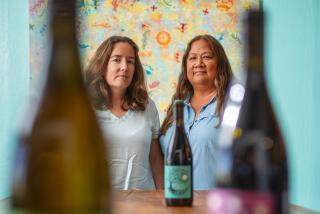What Happens When You Age California Pinot Noirs?
Older wines are notoriously fickle. Some age the way you’d expect, others go off in directions not at all evident when they were young. Over the centuries, Europeans have come to understand a thing or two about how their wines age, but New World vintners are still in the learning process.
This is true even with such thoroughly studied grapes as Cabernet Sauvignon. These days we know pretty well how Cabs will age, and we’ve learned a bit about why some vintages hold up better than others. But even with this grape there are questions. The Cabernets of the 1990s are bigger, richer, deeper, riper, more open and more alcoholic than earlier vintages. Will wines that are so opulent in youth age the same way as earlier vintages made in a tighter style?
Pinot Noir is even more troublesome. Indeed, there are those who argue that Pinot Noir will never taste better than it does when it is first released. Look at the opulent fruit, they say. Look at the already lush texture. Look at the relative lack of tannin. It’s hard to disagree.
Still, many California Pinot Noirs have aged gracefully over the years. Since the grape is an ever more important part of the state’s wine scene, now is a good time to look more closely at how Pinots change over time.
We don’t have as long a track record on Pinot as we have for Cabernet. The early years of California Pinot Noir were not happy ones. Not only were many of the first vineyards in the wrong places, but the notoriously fickle grape also produced wines that differed from year to year for seemingly little reason.
Even today, Pinot is not nearly as predictable as Cabernet. In the 1990s, for instance, when California plantings had largely shifted to hospitable places such as the Russian River Valley, Carneros and Santa Barbara County, Pinot only produced three across-the-board good vintages (1990, 1994 and 1999). Every other year has been spotty.
It may be hard to draw any strict rules about California Pinot Noir from this tasting, but it’s striking how well many of these supposedly short-lived wines pulled from the cellar have aged.
1980 HMR Winery, Paso Robles. The old Hoffman Mountain Ranch in the hills west of Paso Robles produced admirable Pinot Noirs from a site rich in chalk and limestone. This wine is typical of those fairly ripe yet balanced early efforts, and it has held up amazingly well. Its texture is all Pinot, and its flavors, while certainly no longer vigorous, are rich with fruit and suggestions of cherries, smoke and tobacco.
1981 Kenwood Vineyards “Jack London Vineyard,” Sonoma Valley. Everything that comes out of this mountain vineyard tends to sturdiness and high ripeness. In that regard, this wine does give us some idea how grapes grown in higher terrains might fare over time. It shows its age in tobacco and cedar aromas, yet there are also clear notes of blackberry, pepper and walnuts and a fleshy, supple texture on the palate. While the nose hints at some weariness, the mouth is surprising alive for a Pinot Noir of two decades.
1982 Calera “Jensen Vineyard,” Central Coast. This wine has aged exactly as you’d expect. It has always had a bit of a volatile note, which continues to raise eyebrows with aromas that are at once expansive and somewhat narrow. In the mouth, the wine fights against the pinching aspects of the sharpness, but you can easily detect the flavors of ripe cherries and toasty oak.
1983 Gary Farrell, Russian River Valley. Farrell’s Pinot Noirs are balanced, refined and graceful. Some are less intense than they might be because they are not pushed into super-ripeness, but all share the same good manners and sense of proportion. This wine, too, has lost something in the nose over the years, but the flavors are still bright and lively.
1984 McHenry Winery, Santa Cruz Mountains. This winery didn’t last long and had only four acres to pull grapes from, but this Pinot Noir is one of its successes. Even today, it’s ripe, supple and somewhat velvety in feel, and its first flavors of concentrated cherries are undone only slightly by the latter dryness on the palate to be expected in a modest wine of its age.
1985 Acacia Winery, Carneros. This wine was made in a lighter, somewhat fruitier style. It was never intended to last this long, but somehow it has. The clean, strawberry jam aromas are tinged with touches of toffee and caramel and a light layering of vanilla. The texture is soft and velvety, and the flavors are very much as predicted by the nose. A bit of drying out shows up at the finish, but that, too, is pretty much as expected. All in all, this wine has had a heck of a good ride and makes a strong case for the ageability of balanced Carneros Pinot Noirs.
1986 Elk Cove Vineyards “Estate Bottled Reserve,” Oregon. We liked this wine when it was released and are now disappointed that it has turned heavy, blocky and somewhat woody without richness. Older wines can break your heart, and we never open one for dinner without having a backup ready.
1987 Carneros Creek Winery, Carneros. This two-star wine was a forerunner of the ripe, deep model now popular among Pinot Noir makers. Today, it is a mix of the unusual, the merely nice and the absolutely lovely. Its first aromas are a bit dry, ripe and herbal, but airing brings out layers of cherries and a very clear sense of succulence along with some vanillin-scented oakiness. In the mouth, the wine simply sings, with its velvety, somewhat fleshy texture supported by plenty of still-vibrant fruit. Surprisingly, it also carries a rough streak of tannin in the finish. It may never become truly soft and open, but it’s a delightful wine now and should age for another five years at least.
1988 Calera “Mills Vineyard,” Central Coast. Our first and lasting impression of this wine is that it exemplifies the Calera family. The deep and compelling fruit is holding very well, as is the angularity that often is part of Calera Pinots. We like this one somewhat more than the 1982 Calera “Jensen” reviewed above, and given its depth and density, it should hold up better over time.
1989 Newlan Vineyards “Vieilles Vignes,” Napa Valley. Bruce Newlan never made enough wine to get the attention he deserved; perhaps he’ll be more successful with his new venture--designing and building ultralight airplanes. Originally a two-star effort from a difficult vintage, this wine is doing very well at age 12 and will last a few years more. It is showing a bit of tobacco leaf along with its sweet spice/dried flower aromas. Still, it is round and has a bit of velvet texture before getting a bit firmer, drier and stiffer as it progresses. We would not look for much more improvement with this one.
1990 Gary Farrell “Bien Nacido Vineyard,” Santa Maria Valley. As impressed as we were by how well the 1983 Farrell Pinot has aged, this one is going to be even better. It still smells and tastes of youth, with pulpy, succulent black cherry notes playing off against attractive oak, and a supple, firm texture that means it should hold for five to 10 more years.
1991 Kistler Vineyards “McCrea Vineyard,” Sonoma Mountain. If the 1987 Carneros Creek was big, this bottling from Kistler was even bigger. Its fruit is still young and amazingly, tantalizingly deep, though with hints of chocolate and alcoholic heat that raise questions about how much further it will go before those elements take over. Our guess is five to 10 years, and we take this wine as proof that the best of the big 1990s-era versions will prove to be longer-lived than many pundits and collectors believe.
More to Read
Sign up for The Wild
We’ll help you find the best places to hike, bike and run, as well as the perfect silent spots for meditation and yoga.
You may occasionally receive promotional content from the Los Angeles Times.






